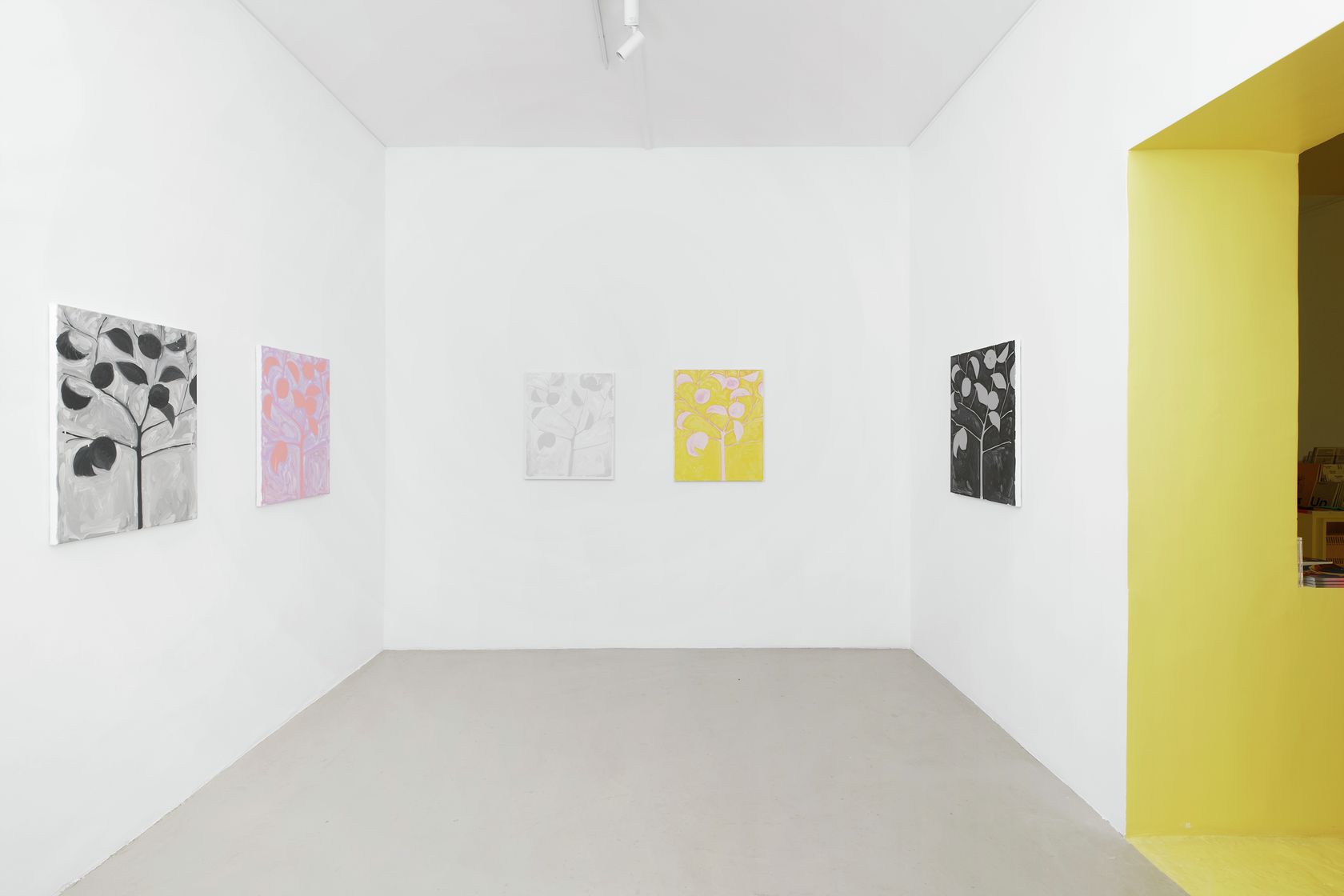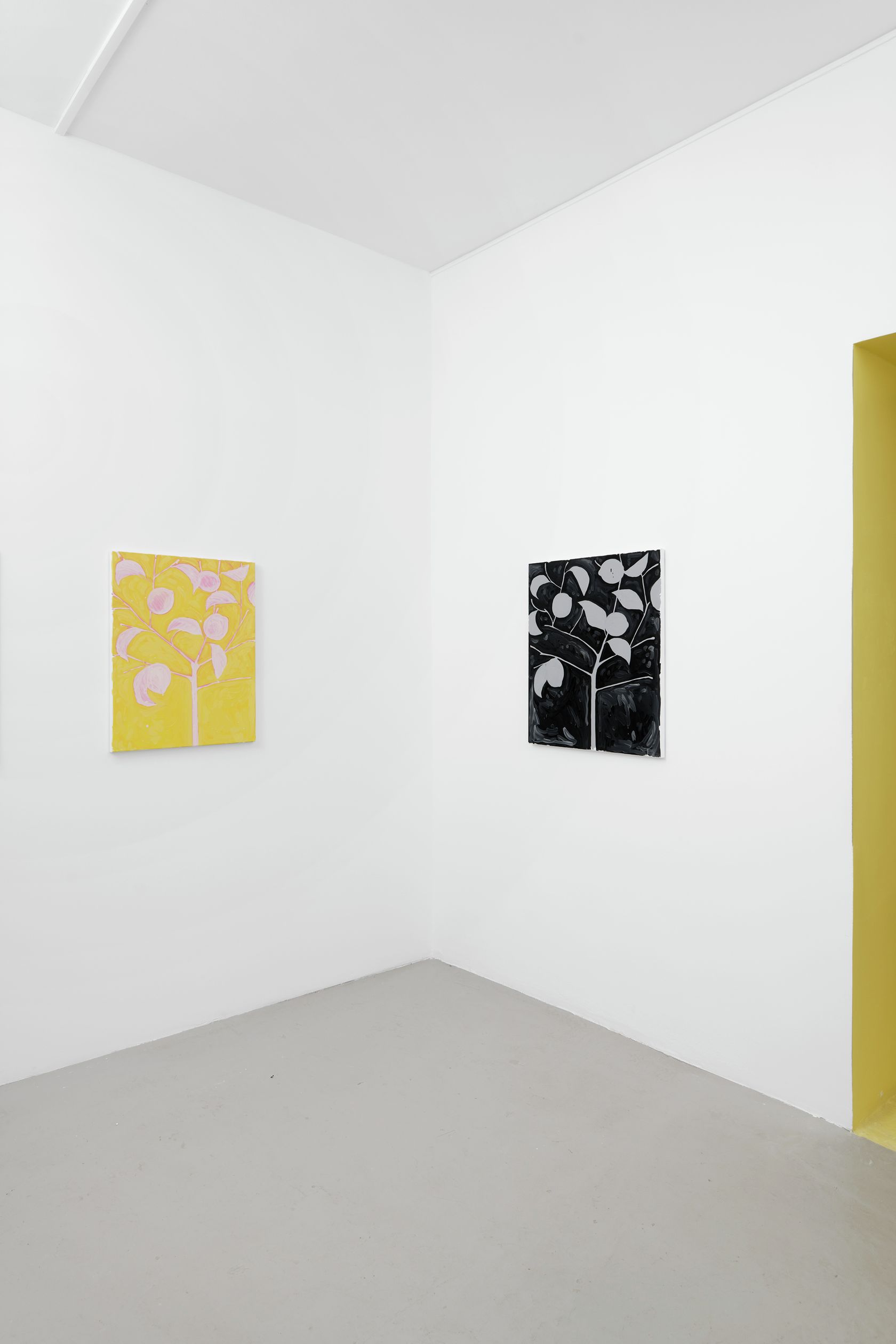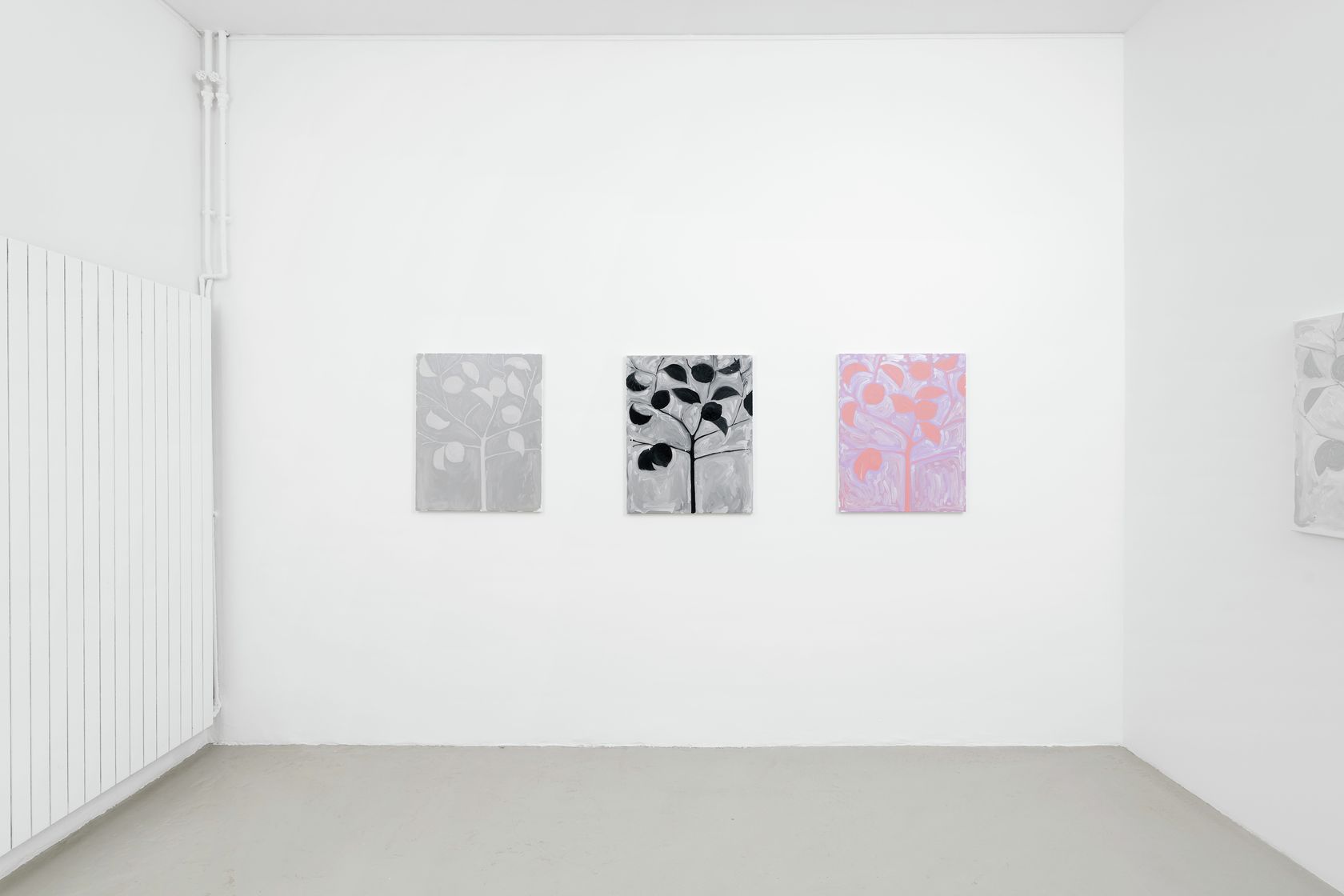Explore the exhibition
Hugo Capron is the winner of the 8th edition of the Emerige Revelation Grant.
Citronnier is an exhibition in partnership with the Fonds de dotation Emerige. This project will be followed by a solo exhibition of the artist this summer at the gallery.
First impressions
Hugo Capron paints in series. Like the nineteenth century Impressionists, Capron’s fascination with ever-changing light conditions’ impact on form, color and composition has inspired him to treat the same subjects over and over—a repetitive exercise that reveals dramatic and subtle variations alike. But while Monet famously worked en plein air in an attempt to capture the transient effects of natural light on haystacks, poplars and waterlilies, Capron paints in a studio, from memory, without so much as a photograph or a sketch for guidance.
Following several colorful series featuring shrimp, carp or fireworks, Capron’s latest paintings depict a lone lemon tree, which he renders in shades of gray. Small and sparse, the inspiration for this still life series resides in the artist’s home in front of a large window. Observing the plant on a daily basis, Capron has internalized its various states of illumination—the soft glow of dawn, the sharp contrasts brought by afternoon’s flat light, the romantic haze of sunset, the darkness when night falls and all the subtle nuances in between. Artificial lights inside and out- side create even more permutations. Back in his studio, Capron conjures some of the infinite combinations of light and shadow into moody paintings of slender branches, orbicular fruits and pointy leaves.
If the simplicity of form in the lemon tree series brings to mind Matisse’s cutouts, Capron’s final paintings appear even more candid due to their lack of color. From one grayscale painting to the next, the relationship between positive and negative space shifts. Background and foreground, however, maintain equal importance and are treated to the same confident painterly brushwork. Defying the traditional compositional hierarchy of the still life genre, Capron does not privilege subject over setting. Considering that light is Capron’s true subject (his compositional elements mere props that alternately absorb or reflect brightness) why would a tree appear any more significant than the window behind it?
The word «impression» applies to Capron’s work in another sense as well, as there is a distinct printerly quality to these paintings that extends well beyond their seriality. Capron, who studied printmaking in Japan and also worked in a commercial printshop, makes paintings whose high-contrast, seemingly chiseled compositions relate specifically to woodblock printing. Harking back again to the nineteenth century, Capron’s latest motif recalls Japanese woodblock prints by the likes of Utagawa Hiroshige—whose image of a plum tree (Plum Park in Kameido, 1857) famously inspired Vincent van Gogh. Capron likewise seems intent on interpreting the crispness and stylized flatness of printmaking using his own distinctive painterly brushstrokes. The results are impressions that feel both immediate and intimate.
Mara Hoberman
Mara Hoberman is a Paris-based art critic. A regular contributor to Art Forum, Mara has also written for The New York Times, The Wall Street Journal, E-Flux’s Art Agenda, Art Slant, Canvas and Whitewall. She is currently conducting research for the forthcoming Joan Mitchell Catalogue Raisonné.


